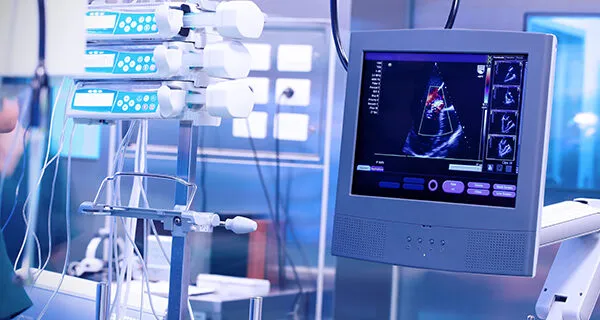BBSREACT / ARTICLES
How the market of cultural tourism will change?
The impact of Covid19 on the cultural industry has been very strong. Even devastating in those sectors of the cultural industry whose practice and economy are based on the physical presence of users. The industry of concerts and live music, theaters, festivals and cultural events, cinemas and, finally, museums.
Not only this industrial sector, in itself fragile also as it is based on professional figures who often have a low level of employment guarantees, had to stop all activities during the lockdown months, and is experiencing recovery difficulties as social distancing measures reduce the potential visitors to such low figures that make any event antieconomic. Let us focus on museums.
The target audience of museum activities are tourists, residents, schools and training centers, and artists. The system economy is based on a mix of public subsidies, from trusts and foundations, and commercial revenues from tickets sold, merchandising, sponsorships, renting spaces, educational activities, and events.
The four months of shutdown and the loss of income resulted in a crisis for the museums balance sheets. Some of them suspended the educational activities indefinitely, an important part of a museum mission, and dismissed employees (85 were let go from the Museum of Modern Art in New York, 300 in San Francisco).
Even those museums that reopened without significant personnel cuts are redefining the projects for the next few years, based on the premise that the safety measures in force reduce the number of potential visitors and commercial activities, in a framework in which tourists will be able to go back to pre-Covid figures only in 2022.
What is characterizing this industry is something though that goes beyond the current budgetary problems caused by the pandemic crisis: it’s the identity itself of museums that needs to be rethought starting from a change, not necessarily contingent, in supply and demand. In terms of demand, it is believed that at least for some years we will witness a change in the market of cultural tourism.
The New Cultural Tourist will be less interested in blockbuster exhibitions, focused on myth-artists, based on the ‘box office’ large figures, achieved through communication campaigns that transform exhibitions into not-to-be-missed events, where quantity doesn’t always mean quality. The new cultural tourist will be after a less hectic museum experience, more insightful and aware, able to convey authenticity and uniqueness. Thus, the museum experience will become an integral part of the visit to the area where the museum is located.
At the same time, in terms of supply, at least for a couple of years, the big blockbuster exhibitions will not take place because of the uncertainty of the global context. For this reason, museums will increasingly put in place strategies to enhance their permanent collections. The objects contained in the museums must be considered, in the first place, as bearers of a large number of stories. Therefore, over the next few years museums will have to work creatively and professionally on the storytelling connected to their exhibits.
A first level is the storytelling that, also resorting to virtual reality and the new communication technologies, is proposed digitally. The aim of this storytelling is not to present an experience to replace the physical visit to the museum, but an experience that will become complete with the actual visit of the museum itself. Therefore, museums will need new professionalisms of communicators and cultural mediators to act as an intelligent interface between the works of art and the visitors, also extending the visit paths outside the museum walls, proposing connections with the entire cultural heritage of the area, in a surprising network of attractive and challenging journeys. This museum experience, which comes out of the museums walls, is relevant also for the audience represented by the area residents.
Today museums are indeed considered internationally not so much exhibition halls but institutions working as cultural hubs in a framework of accountability towards society. They have precise forms of social responsibility also towards the residents, through initiatives on the territory that allow overcoming the cultural, social, and economic threshold that still keeps too many people out of museums. We are talking about inclusive and participative projects, in a perspective of cultural welfare, that make museums familiar places, to be inhabited, rather than visited with detachment.
Museum halls must increasingly become workshops where to offer educational and training activities, to be integrated with school activities, as an opportunity of further growth for the new generations, through the inputs of art. One last area of intervention should be geared on artists and creatives who are not sufficiently recognized on the market and who suffered tremendously these past few months. As it happened at the Museo di Arte Moderna MAMbo of Bologna, it is possible to offer these artists collective experimentation spaces, transforming the museum from the house of the works of art to the home of the artists, a hotbed of new works, incubator of new projects.
The pandemic crisis has forced the museum system to face choices it should have taken years ago. A reduction and a higher selection in terms of quality of the large blockbuster exhibitions. An investment for the enhancement of their permanent collections, through storytelling modes that are effective from a digital viewpoint and in terms of physical spaces to alternate the displayed exhibits and those held in the warehouses. From this point of view, Italian museums that have a huge permanent heritage hold a competitive advantage compared to other countries… if they can make use of it.
An activity that less and less takes place within the four walls of the museum and increasingly opens up to the territory, also with a cultural welfare perspective. By following these suggestions that impose changes to the organizational structure, to the managerial competence and to professionalisms, it will be possible to radically innovate the museum experience, keeping a balance between the commercial point of view and the cultural welfare one.
Author: Roberto Grandi



